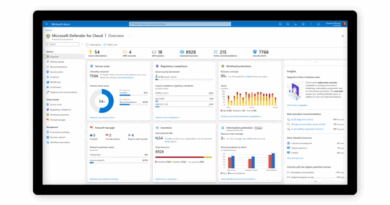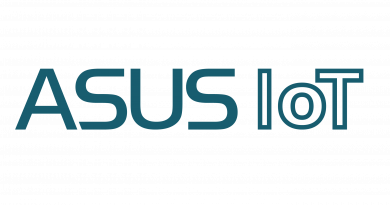CISO stress-busters: post #1 overcoming obstacles

As part of the launch of the U.S. space program’s moon shot, President Kennedy famously said we do these things “not because they are easy, but because they are hard.” The same can be said for the people responsible for security at their organizations; it is not a job one takes because it is easy. But it is critically important to keep our digital lives and work safe. And for the CISOs and leaders of the world, it is a job that is more than worth the hardships.
Recent research from Nominet paints a concerning picture of a few of those hardships. Forty-eight percent of CISO respondents indicated work stress had negatively impacted their mental health, this is almost double the number from last year’s survey. Thirty-one percent reported job stress had negatively impacted their physical health and 40 percent have seen their job stress impacting their personal lives. Add a fairly rapid churn rate (26 months on average) to all that stress and it’s clear CISOs are managing a tremendous amount of stress every day. And when crises hit, from incident response after a breach to a suddenly remote workforce after COVID-19, that stress only shoots higher.
Which is why we’re starting this new blog series called “CISO stress-busters.” In the words of CISOs from around the globe, we’ll be sharing insights, guidance, and support from peers on the front lines of the cyber workforce. Kicking us off—the main challenges that CISOs face and how they turn those obstacles into opportunity. The goal of the series is to be a bit of chicken (or chik’n for those vegans out there) soup for the CISO’s soul.
Today’s post features wisdom from three CISOs/Security Leaders:
- TM Ching, Security CTO at DXC Technology
- Jim Eckart, (former) CISO at Coca-Cola
- Jason Golden, CISO at Mainstay Technologies
Clarifying contribution
Ask five different CEOs what their CISOs do and after the high level “manage security” answer you’ll probably get five very different explanations. This is partly because CISO responsibility can vary widely from company to company. So, it’s no surprise that many of the CISOs we interviewed touched on this point.
TM Ching summed it up this way, “Demonstrating my role to the organization can be a challenge—a role like mine may be perceived as symbolic” or that security is just here to “slow things down.” For Jason, “making sure that business leaders understand the difference between IT Operations, Cybersecurity, and InfoSec” can be difficult because execs “often think all of those disciplines are the same thing” and that since IT Ops has the products and solutions, they own security. Jim also bumped up against confusion about the security role with multiple stakeholders pushing and pulling in different directions like “a CIO who says ‘here is your budget,’ a CFO who says ‘why are you so expensive?’ and a general counsel who says ‘we could be leaking information everywhere.’”
What works:
- Educate Execs—about the role of a CISO. Helping them “understand that it takes a program, that it’s a discipline.” One inflection point is after a breach, “you may be sitting there with an executive, the insurance company, their attorneys, maybe a forensics company and it always looks the same. The executive is looking down the table at the wide-eyed IT person saying ‘What happened?’” It’s a opportunity to educate, to help “make sure the execs understand the purpose of risk management.”—Jason Golden. To see how to do this watch Microsoft CISO Series Episode 2 Part 1: Security is everyone’s Business
- Show Don’t Tell—“It is important to constantly demonstrate that I am here to help them succeed, and not to impose onerous compliance requirements that stall their projects.”—TM Ching
- Accountability Awareness—CISOs do a lot, but one thing they shouldn’t do is to make risk decisions for the business in a vacuum. That’s why it’s critical to align “all stakeholders (IT, privacy, legal, financial, security, etc.) around the fact that cybersecurity and compliance are business risk issues and not IT issues. IT motions are (and should be) purely in response to the business’ decision around risk tolerance.”—Jim Eckart
Exerting influence
Fans of Boehm’s curve know that the earlier security can be introduced into a process, the less expensive it is to fix defects and flaws. But it’s not always easy for CISOs to get security a seat at the table whether it’s early in the ideation process for a new customer facing application or during financial negotiations to move critical workloads to the cloud. As TM put it, “Exerting influence to ensure that projects are secured at Day 0. This is possibly the hardest thing to do.” And because “some business owners do not take negative news very well” telling them their new app baby is “security ugly” the day before launch can be a gruesome task. And as Jason pointed out, “it’s one thing to talk hypothetically about things like configuration management and change management and here are the things that you need to do to meet those controls so you can keep your contract. It’s a different thing to get that embedded in operations so that IT and HR all the way through finance are following the rules for change management and configuration management.”
What Works:
- Negotiate engagement—To avoid the last minute “gotchas” or bolting on security after a project has deployed, get into the conversation as early as possible. This isn’t easy, but as TM explains, it can be done. “It takes a lot of negotiations to convince stakeholders why it will be beneficial for them in the long run to take a pause and put the security controls in place, before continuing with their projects.”
- Follow frameworks—Well-known frameworks like the NIST Cybersecurity Framework, NIST SP800-53, and SP800-37 can help CISOs “take things from strategy to operations” by providing baselines and best practices for building security into the entire organization and systems lifecycle. And that will pay off in the long run; “when the auditors come calling, they’re looking for evidence that you’re following your security model and embedding that throughout the organization.” —Jason
Cultivating culture
Wouldn’t it be wonderful if every company had a security mindset and understood the benefits of having a mature, well-funded security and risk management program? If every employee understood what a phish looks like and why they should report it? Unfortunately, most companies aren’t laser focused on security, leaving that education work up to the CISO and their team. And having those conversations with stakeholders that sometimes have conflicting agendas requires technical depth and robust communication skills. That’s not easy. As Jim points out, “it’s a daunting scope of topics to be proficient in at all levels.”
What works:
- Human firewalls—All the tech controls in the world won’t stop 100 percent of attacks, people need to be part of the solution too. “We can address administrative controls, technical controls, physical controls, but you also need to address the culture and human behavior, or the human firewalls. You know you’re only going to be marginally successful if you don’t engage employees too.” —Jason
- Know your audience—CISOs need to cultivate “depth and breadth. On any given day, I needed to move from board-level conversations (where participants barely understand security) all the way to the depths of zero day vulnerabilities, patching, security architecture.” —Jim
Did you find these insights helpful? What would you tell your fellow CISOs about overcoming obstacles? What works for you? Please reach out to me on LinkedIn and let me know what you thought of this article and if you’re interested in being interviewed for one of our upcoming posts.
READ MORE HERE



